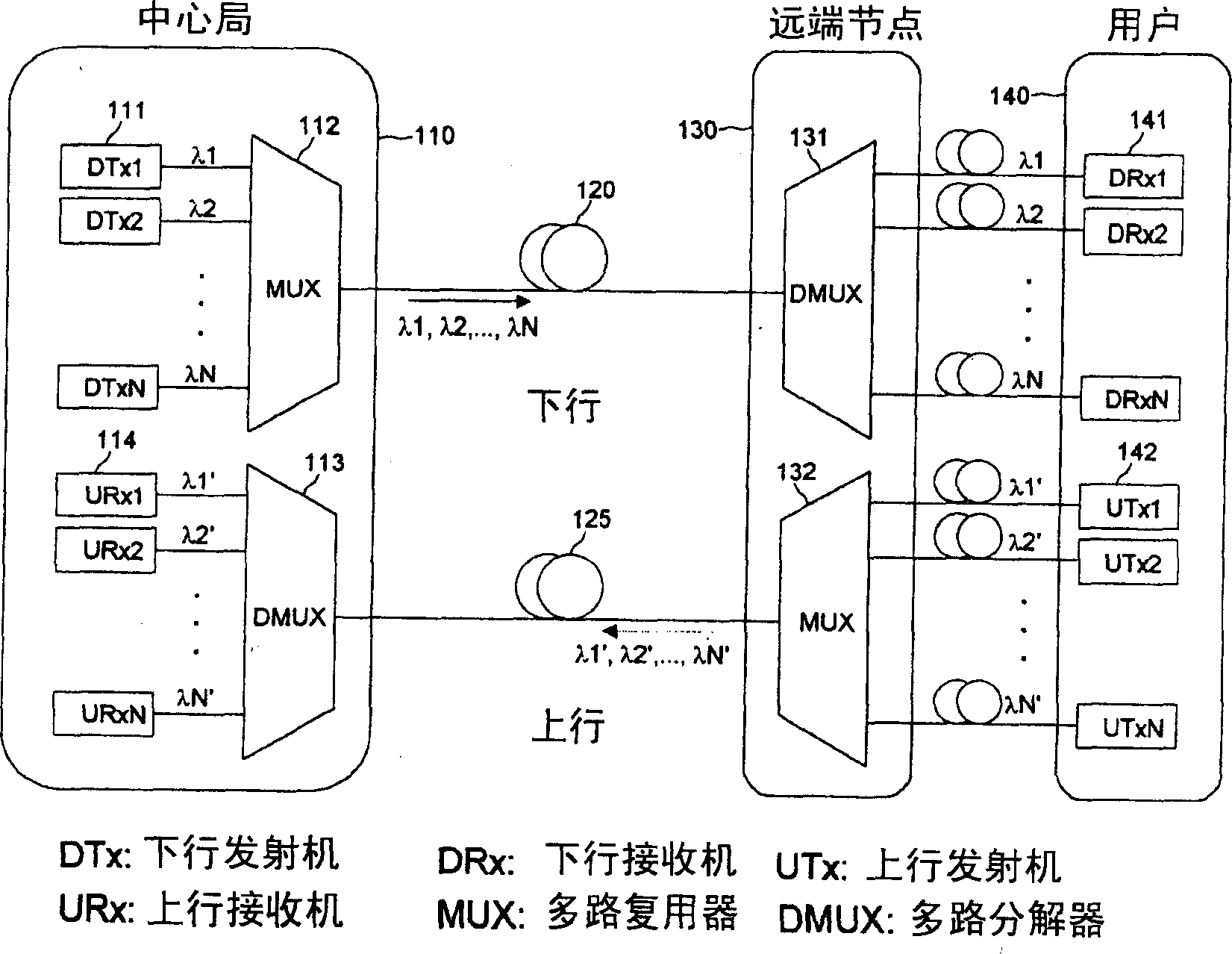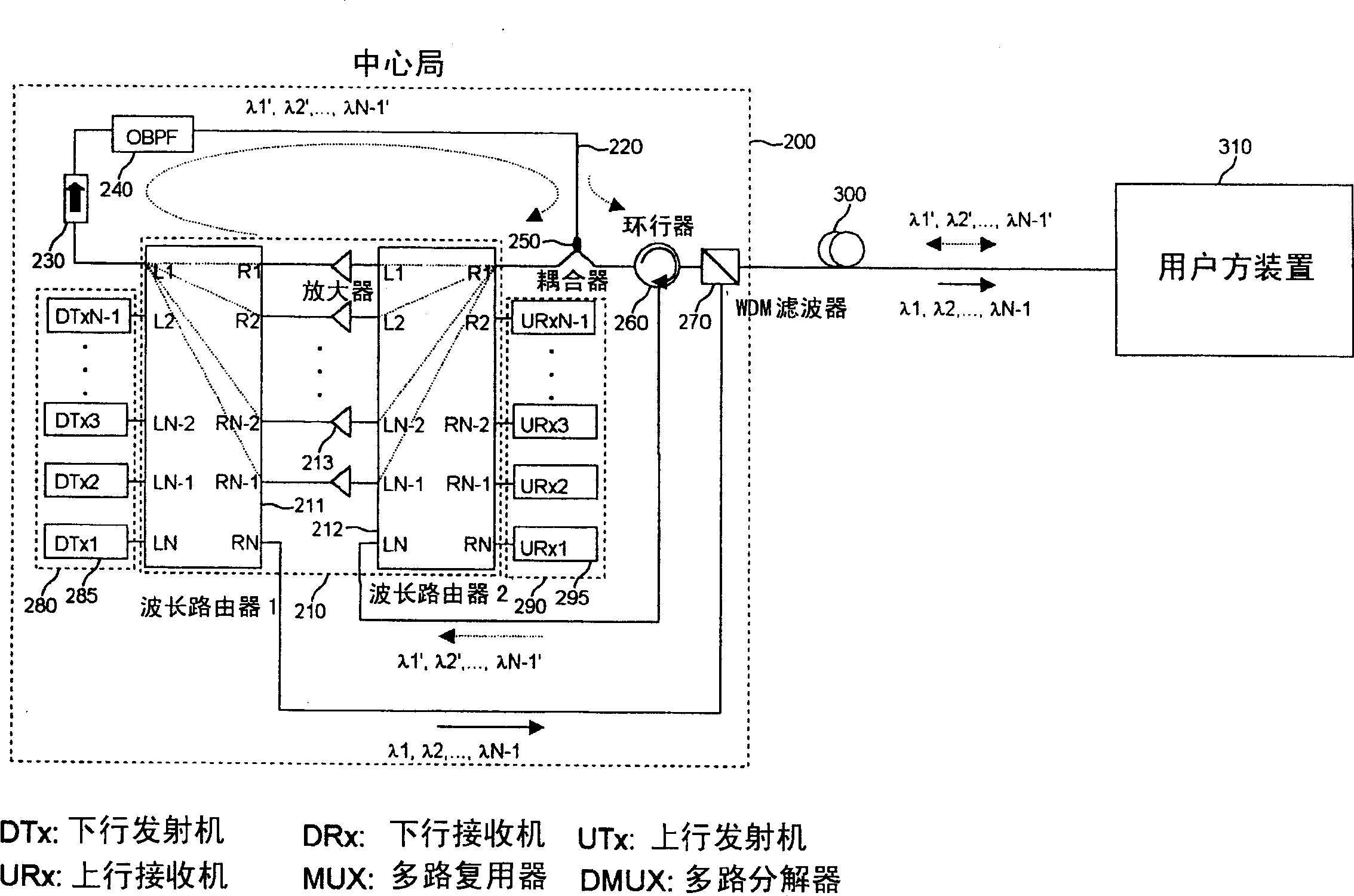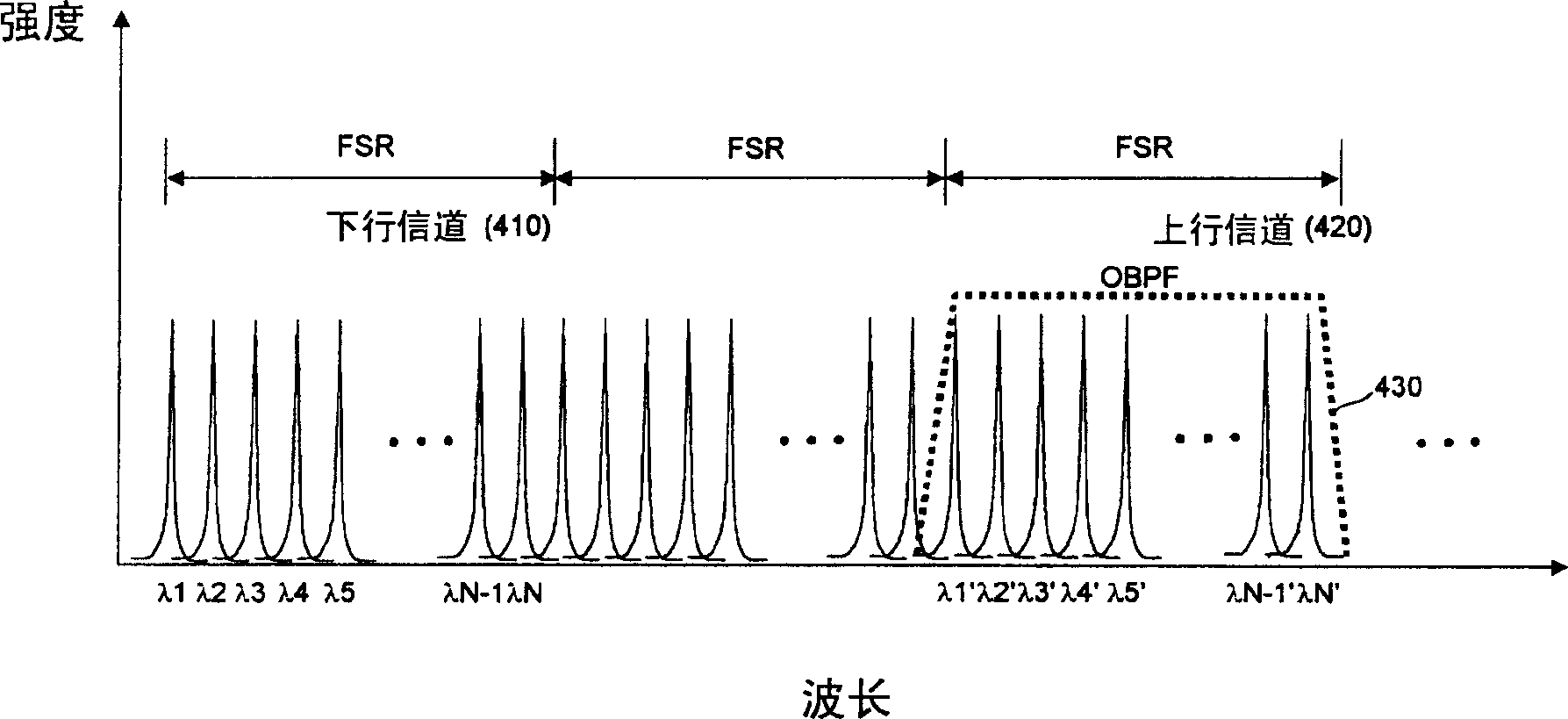Passive optical fiber net of loop of multiple wave length light generated by utilizing central location
A passive optical network and multi-wavelength technology, applied in the field of optical communication systems, can solve the problems of increased transmission error rate, inability to operate high-capacity optical signal networks, and increased cost of user-side devices.
- Summary
- Abstract
- Description
- Claims
- Application Information
AI Technical Summary
Problems solved by technology
Method used
Image
Examples
Embodiment Construction
[0026] Preferred embodiments of the present invention will be described in detail below with reference to the accompanying drawings.
[0027] figure 2 The construction of a wavelength division multiplexing (WDM) passive optical fiber network according to the present invention is shown. The passive optical network includes a central office 200 and a customer side device 310, wherein the customer side device 310 is connected with the central office 200 through an optical fiber link 300, and performs communication with the central office 200 according to a wavelength division multiplexed optical signal.
[0028] The central office 200 transmits a downlink optical signal modulated with multi-wavelength light and a data signal to the user side device 310 and receives an uplink optical signal from the user side device 310 . The user side device 310 receives the multi-wavelength light and downlink optical signal from the central office 200, demultiplexes the multi-wavelength light ...
PUM
 Login to View More
Login to View More Abstract
Description
Claims
Application Information
 Login to View More
Login to View More - R&D
- Intellectual Property
- Life Sciences
- Materials
- Tech Scout
- Unparalleled Data Quality
- Higher Quality Content
- 60% Fewer Hallucinations
Browse by: Latest US Patents, China's latest patents, Technical Efficacy Thesaurus, Application Domain, Technology Topic, Popular Technical Reports.
© 2025 PatSnap. All rights reserved.Legal|Privacy policy|Modern Slavery Act Transparency Statement|Sitemap|About US| Contact US: help@patsnap.com



